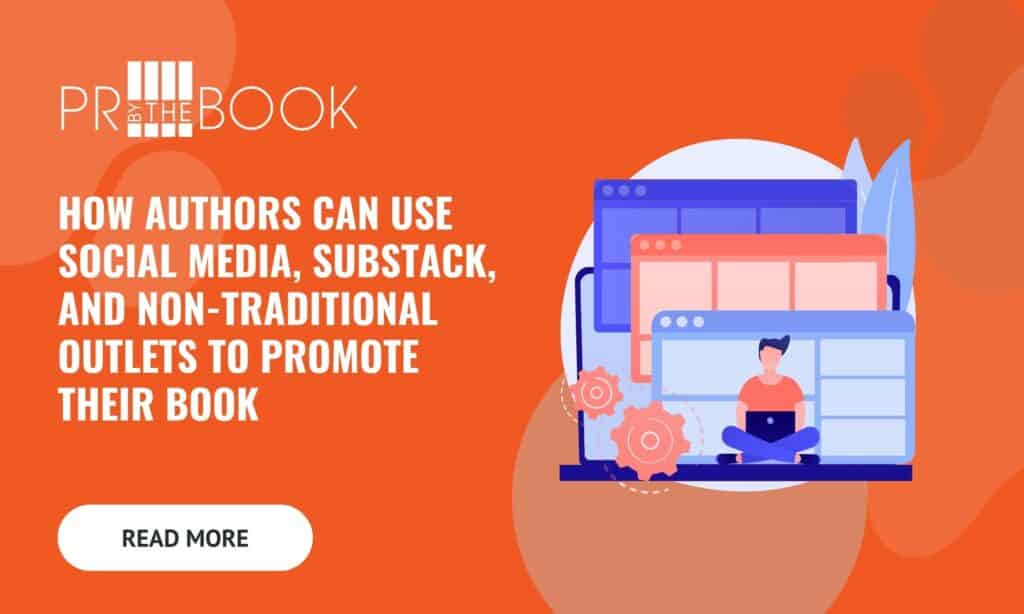22 Things a Successful Book Publicist Does in a Day
-
Chandler Rawson
- Reading Time: 7 Minutes

SHARE
Discover the 22 essential tasks that define a successful publicist’s day, from media pitching and client meetings to event coordination and creative brainstorming. Gain insights into the dedication, expertise, and strategy behind standout book publicity campaigns as PR by the Book celebrates 22 years of elevating authors and their stories.
For a successful publicist, no two days are ever the same, but each one is packed with a flurry of strategic activities, insightful conversations, and clever pitches that drive a client’s success. As PR by the Book celebrates 22 years in business, we’re sharing an inside look at the 22 essential things a seasoned publicist does in a day to keep campaigns moving forward and authors in the spotlight. These aren’t just tasks; they’re a blend of creativity, expertise, and a keen sense of timing that defines a standout career in publicity. Here’s to 22 years of elevating voices, creating opportunities, and building buzz in the world of books.
- Check Emails: Start the day by thoroughly reviewing and responding to emails from clients, media contacts, and colleagues. This helps prioritize tasks and set the day’s agenda, ensuring no important communication goes unanswered and maintaining strong relationships.
- Media Monitoring: Keep up with daily news, track coverage related to clients, and identify relevant stories or trends that can be used as hooks for client pitching. This involves monitoring print, online, and broadcast media to stay aware of shifts in public interest.
- Pitch Media: Dedicate a significant portion of the day to crafting and sending tailored pitches to media outlets on behalf of clients. This includes following up to maximize the chances of securing coverage, building rapport with journalists, and addressing any follow-up queries.
- Manage Press Requests: Respond promptly to inbound media inquiries and coordinate interviews or features for clients. This includes preparing briefing documents, setting up call or meeting logistics, and supporting clients throughout the process.
- Social Media Management (Client): Review and engage with client social media accounts to manage content, respond to mentions or comments, and monitor overall performance. This ensures clients maintain a consistent and positive online presence.
- Social Media Management (Personal): Maintain and review personal social media accounts to monitor what journalists, influencers, and other publicists are posting. This helps keep a pulse on the industry and maintain professional connections.
- Create Press Materials: Develop compelling press releases, media kits, fact sheets, and other press materials tailored for different outlets. These should highlight key messages and unique aspects of each client’s book or brand to grab attention.
- Client Meetings: Schedule and conduct regular client check-ins to review progress, discuss feedback, align on strategy, and onboard new clients. These meetings strengthen relationships and ensure all parties remain on the same page.
- Research Competitors: Conduct competitive analysis to benchmark clients against similar authors or books in the genre. This helps identify gaps and opportunities for positioning clients effectively in the market.
- Collaborate with Media: Build long-term relationships with journalists, editors, and influencers by understanding their preferences, interests, and work schedules. This helps publicists pitch more effectively and secure coverage for their clients.
- Track Industry Trends: Stay informed about changes and trends in publishing and media industries that could impact client strategies. This includes following key publications, joining relevant industry groups, and being aware of technological shifts affecting media consumption.
- Continuing Education: Regularly participate in webinars, workshops, and training sessions to expand knowledge on the latest PR strategies, tools, and best practices. This helps a publicist stay competitive and innovative.
- Connecting/ Networking: Attend conferences, workshops, book fairs, and other industry events to build a strong network of media contacts, potential clients, and industry peers. Networking is key to discovering new opportunities and staying connected.
- Training Clients: Offer media training for clients to prepare them for interviews and public speaking engagements. This includes conducting mock interviews and coaching them on how to handle difficult questions or topics.
- Internal Meetings: Participate in regular team meetings to collaborate with colleagues, align strategies, and share updates. Internal communication is crucial for coordinating efforts and maintaining a cohesive team approach.
- Creating Reports: Compile comprehensive reports detailing campaign performance, media coverage, and ROI for client review. Regular reporting ensures transparency, keeps clients informed, and helps measure the effectiveness of PR efforts.
- Follow Up with Journalists: After initial pitches, follow up with journalists to remind them about your client’s story and provide additional context or resources as needed. This step is crucial to increase the likelihood of securing media coverage.
- Stay Adaptable: Be prepared for last-minute changes or unexpected client needs. This requires flexibility, quick decision-making, and a mindset that embraces problem-solving under pressure.
- Review Media Coverage: Continuously track and analyze media coverage secured for clients to gauge impact and public response. Highlight successes and learn from less impactful outcomes to refine future pitches and strategies.
- Creative Brainstorming: Regularly dedicate time to think creatively about new campaign ideas, special promotions, or unique event concepts that can help clients stand out. This can involve brainstorming sessions with colleagues or solo work.
- Event Coordination: Plan and organize book signings, virtual readings, panel discussions, and other client events. Coordinate logistics, promotion, and media attendance to maximize reach and impact.
- Self-Care and Balance: Prioritize self-care to maintain productivity and avoid burnout. Ensure there is time in the day for breaks, moments to recharge, and activities that help sustain a healthy work-life balance, as this ultimately enhances effectiveness.
As PR by the Book commemorates its 22nd year, these 22 daily actions highlight the dedication, precision, and passion that go into every campaign. A publicist’s role extends far beyond pitching stories—it’s about cultivating relationships, anticipating trends, and amplifying each author’s unique voice. The work might be demanding, but it’s deeply rewarding, with each day offering a new chance to shine a light on powerful stories. Here’s to the future of PR by the Book, and to many more years of connecting readers with books that inspire, inform, and entertain.
Want to harness the expertise of seasoned publicists for your book? Connect with PR by the Book today.
Special thanks to Stephen Lee, Director of Publicity at PR by the Book for sharing his expertise, insights and time to create this article.
Looking to learn more about book publicity? Check out:
Chandler Rawson

Celebrate We Love Memoirs Day with These Must-Read Memoirs
Celebrate We Love Memoirs Day with These Must-Read Memoirs SHARE

How Authors Can Use Social Media, Substack, and Non-Traditional Outlets To Promote Their Book
How Authors Can Use Social Media, Substack, and Non-Traditional Outlets

Why Every Author Should Have a Podcast
Why Every Author Should Have a Podcast SHARE How podcasting
